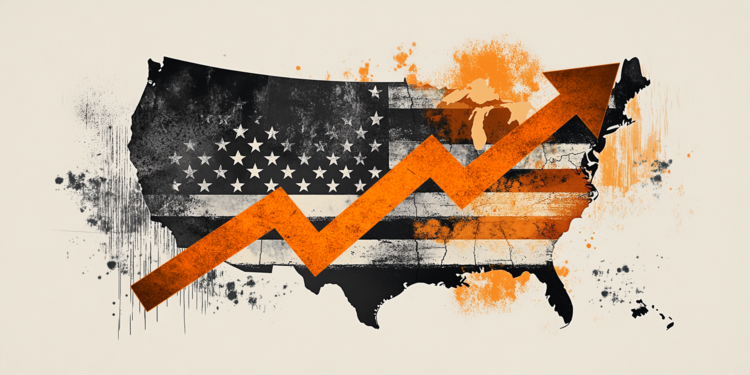- The core Personal Consumption Expenditures Price Index is expected to rise 0.3% MoM and 2.6% YoY in January.
- Markets largely expect the Federal Reserve to hold the policy setting unchanged in March and May.
- Annual PCE inflation is forecast to edge lower to 2.5% from 2.6% in December.
The United States (US) Bureau of Economic Analysis (BEA) is set to release the Personal Consumption Expenditures (PCE) Price Index data for January on Friday at 13:30 GMT. This index is the Federal Reserve’s (Fed) preferred measure of inflation.
Although PCE inflation data is usually seen as a big market mover, it might be difficult to assess its impact on the US Dollar’s (USD) valuation this time. Markets see virtually no chance of a Fed interest rate cut in March, and investors have been more interested in headlines surrounding US President Donald Trump’s policy changes and their potential impact on the economic outlook.
Anticipating the PCE: Insights into the Fed’s key inflation metric
The core PCE Price Index, which excludes volatile food and energy prices, is projected to rise 0.3% on a monthly basis in January, following the 0.2% increase recorded in December. Over the last twelve months, the core PCE inflation is forecast to soften to 2.6% from 2.8%. Meanwhile, the headline annual PCE inflation is seen retreating to 2.5% from 2.6% in the same period.
Following a 25 bps cut in December, lowering the Fed’s policy rate to the 4.25%-4.50% range, the central bank kept interest rates unchanged in the January decision. In the meeting Minutes released on February 19, the central bank removed earlier language suggesting inflation had “made progress” toward its 2% target, instead stating that the pace of price increases “remains elevated” to justify such a pause.
Previewing the PCE inflation report, TD Securities said: “We look for core PCE prices to register a notably weaker advance in January compared to the CPI equivalent’s 0.45% m/m increase. Headline PCE inflation should also come in softer at 0.30%. On a y/y basis, core PCE inflation is likely to drop by a notable three tenths to 2.5%—its lowest level since early 2021. Personal spending also likely fell for the first time since March.”
How will the Personal Consumption Expenditures Price Index affect EUR/USD?
Market participants will likely react to an unexpected reading in the monthly core PCE Price Index, which is not distorted by base effects. A print of 0.4% or higher in this data could support the US Dollar (USD) with the immediate reaction. On the other hand, a reading below 0.2% could have the opposite effect on the USD’s performance against its major rivals.
Nevertheless, the market reaction is likely to remain short-lived. According to the CME FedWatch Tool, investors see about a 98% probability of the Fed holding the policy settings unchanged in March and price in a 20% chance of a 25 bps rate cut in May. It will likely take several soft PCE inflation readings in succession before market participants see a stronger probability of a rate reduction in May.
Eren Sengezer, European Session Lead Analyst at FXStreet, shares a brief technical outlook for EUR/USD:
“The Relative Strength Index (RSI) indicator on the daily chart edges lower but manages to hold above 50, suggesting that EUR/USD loses upward momentum while keeping a slightly bullish bias.”
“On the downside, 1.0390-1.0380 (50-day Simple Moving Average (SMA), Fibonacci 23.6% retracement level of the November-January downtrend) aligns as the first support. In case EUR/USD makes a daily close below this level, technical sellers could take action and open the door for an extended decline toward 1.0300 (static level). Looking north, the first resistance could be spotted at 1.0520 (100-day SMA). Once EUR/USD starts using this level as support, 1.0570 (Fibonacci 50% retracement) and 1.0650 (Fibonacci 61.8% retracement) could be set as next bullish targets.”
Tariffs FAQs
Tariffs are customs duties levied on certain merchandise imports or a category of products. Tariffs are designed to help local producers and manufacturers be more competitive in the market by providing a price advantage over similar goods that can be imported. Tariffs are widely used as tools of protectionism, along with trade barriers and import quotas.
Although tariffs and taxes both generate government revenue to fund public goods and services, they have several distinctions. Tariffs are prepaid at the port of entry, while taxes are paid at the time of purchase. Taxes are imposed on individual taxpayers and businesses, while tariffs are paid by importers.
There are two schools of thought among economists regarding the usage of tariffs. While some argue that tariffs are necessary to protect domestic industries and address trade imbalances, others see them as a harmful tool that could potentially drive prices higher over the long term and lead to a damaging trade war by encouraging tit-for-tat tariffs.
During the run-up to the presidential election in November 2024, Donald Trump made it clear that he intends to use tariffs to support the US economy and American producers. In 2024, Mexico, China and Canada accounted for 42% of total US imports. In this period, Mexico stood out as the top exporter with $466.6 billion, according to the US Census Bureau. Hence, Trump wants to focus on these three nations when imposing tariffs. He also plans to use the revenue generated through tariffs to lower personal income taxes.

